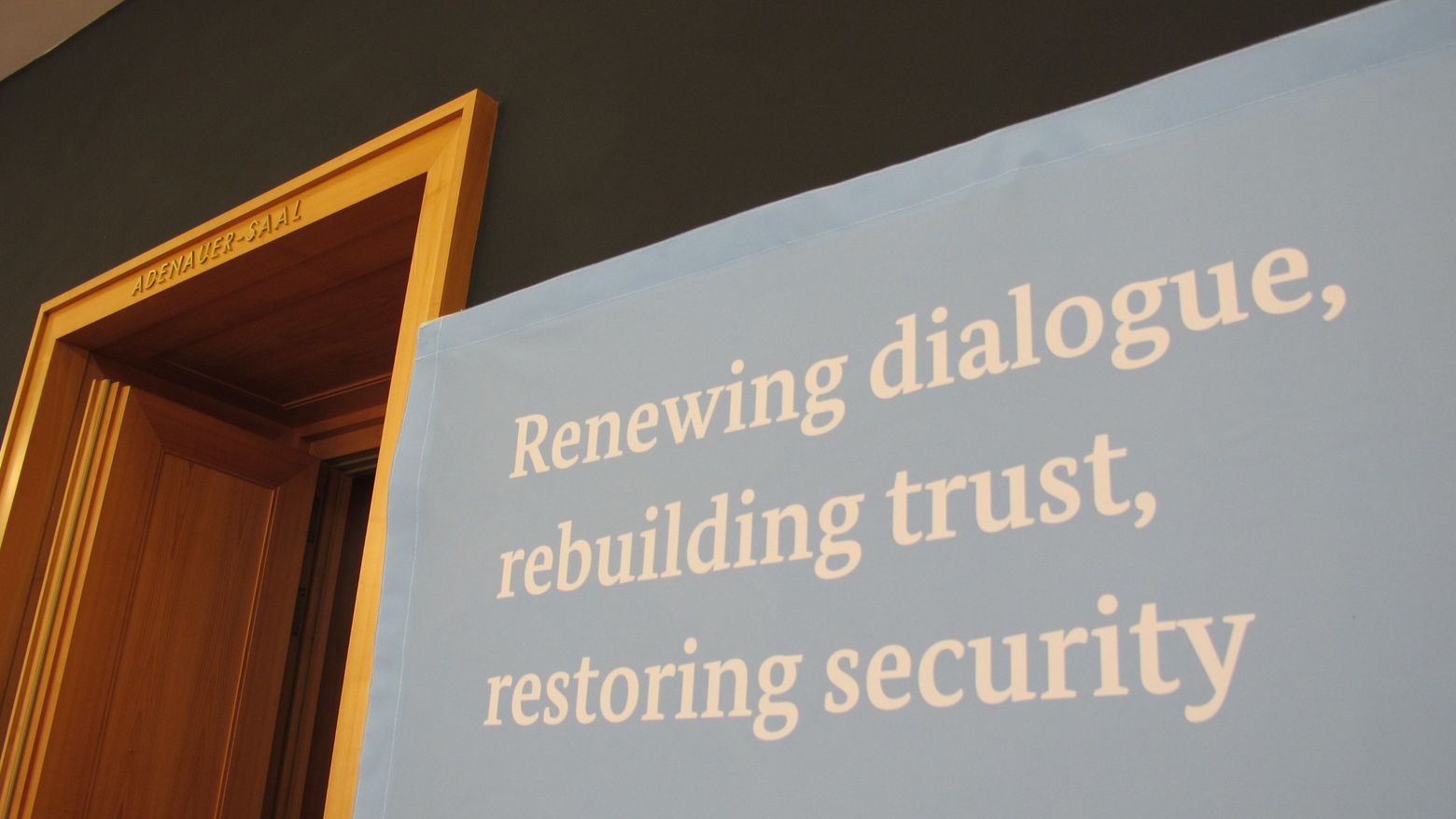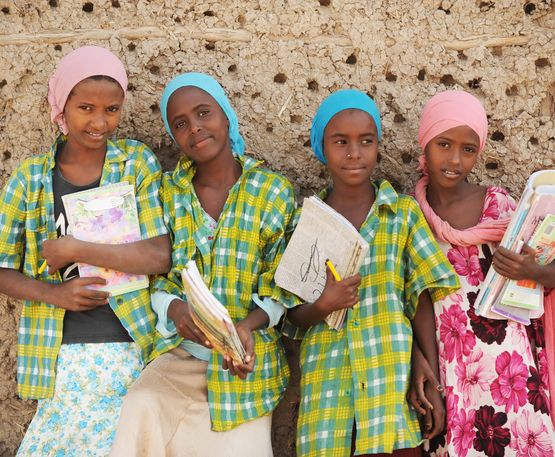In view of the dramatic images and the course of the war in Ukraine, pushing ahead with the demand for more intensive diplomacy is no easy task – but ultimately, there is no other option. This is about saving lives, preserving Ukraine as a sovereign state and preventing the war from spreading. But how can the conflicts linked to the war be transformed, and which historical developments must be considered in this context? In light of the renewed confrontation between the blocs in Europe, is there any possibility of a new security and peace order emerging? What role might the EU and its member states play in this context?
The Russian government’s war of aggression against Ukraine constitutes a massive breach of international law and is an act of destruction against the multilateral order. It makes a mockery of international humanitarian law, which obliges conflict parties to protect civilians to the greatest possible extent. The atrocities that have accompanied the fighting should be investigated by independent courts and those responsible must be held to account. The decisions by international organisations and individual states to impose sanctions in the finance, technology transfer and, as far as possible, energy sectors are certainly necessary as a signal to the world, as well as for reasons of solidarity with Ukraine, although they are only likely to have an effect in the longer term.
While the images of death, suffering and destruction in Ukraine make this very difficult, all the diplomatic channels must be utilised, for it is a matter of saving lives, preserving Ukraine as a sovereign state and preventing the war from spreading. To that end, the overarching conflict between NATO and Russia must be de-escalated, for ultimately, the Kremlin’s purpose in prosecuting this war is to demonstrate its power to NATO and break »Western dominance«. The hope for a new peace and security order in Europe should not be abandoned, even though it is surely only achievable in the long term at best. A prerequisite is a willingness to reflect critically on the past and seek new pathways towards arms control.
Curbing the vicious cycle
The show of strength agreed by international institutions, EU member states and other countries with the aid of sanctions is important in order to exert pressure on the Russian government. The EU agreed several packages of sanctions in an unexpectedly swift display of unanimity. However, experienced peace researchers such as Tobias Debiel and Herbert Wulf (2022) draw attention to the ambivalence and also the escalation potential of sanctions: they should hit Russia hard, but should not destroy it. The fact is that when sanctions are agreed, the impacts on all sides must be carefully calculated. This challenge, and consideration of the minimum peace policy requirements that sanctions must meet (see Werthes and Hussak 2022), are key factors determining the success of sanctions regimes. However, the unanimity shown by EU states in the first days of the war has now given way to a rather more mixed picture. By contrast, the issue of arms shipments has been less problematic for EU member states. The »European Peace Facility«, established in 2021 and criticised by many NGOs, not only on account of its misleading name (cf. Fischer 2021), now allows weapons and ammunition from European production to be supplied to third countries within the framework of military assistance. Substantial amounts of war material have been sent to Ukraine via this route in recent months. Given that this is a war of aggression, Ukraine’s right of self-defence is beyond question. Nevertheless, it is essential to exercise caution, also in relation to military assistance, say peace researchers Debiel and Wulf. They argue that if the assistance goes beyond supplying defensive weapons, this would be “playing with fire” and a step up to the next rung on the escalation ladder. “This applies especially to the sometimes mooted provision of Polish MiG-29 fighter aircraft. Even the logistics of their transfer to Ukraine would come perilously close to the threshold for NATO’s direct involvement in the war” (ibid. 2022). It is absolutely crucial to avoid any escalation to a third world war. In order to prevent this, intensive diplomatic efforts are required at various levels. All the parties involved should be engaging with each other now more than ever, for the kind of routine errors that occur in the military even in peace time (such as violations of airspace) can lead to disaster in a highly escalated situation. Conflict researcher Friedrich Glasl (2022a) has convincingly illustrated where it would lead if engagement were to cease and energies were to be focused solely on destroying the opposing system: together into the abyss. If the conversation is to continue, Glasl says, demonisation and polemics are the wrong approach.
Towards a ceasefire?
In an article in »Foreign Affairs« (2022), American political scientists Thomas Graham (Council on Foreign Relations, New York) and Rajan Menon (City University of New York) have put forward a number of proposals that are worthy of consideration. They argue that prolonging the war will lead to a mounting death toll and wreak further economic damage that will take years, perhaps decades, to repair. It will also increase the likelihood of the war spreading beyond Ukraine, drawing in the NATO countries. With the images of more atrocities, there is a heightened risk that the response will involve measures that harbour a further threat of escalation – this is precisely what has happened with the massacres known to have occurred in Ukraine: windows for engagement are closing, and the escalation continues. Graham and Menon call for an end to the suffering through diplomatic engagement and a political settlement. A ceasefire would allow humanitarian aid to be delivered to the wounded and refugees inside and outside Ukraine and create more favourable conditions for the start of negotiations. Ukraine and its supporters would have to consider what kind of compromises they can support. From a Ukrainian perspective, security assurances from Western countries are essential for a solution based on neutrality, and these assurances would have to be accepted by Russia, which must also contribute to the cost of reconstructing Ukraine. The West, for its part, must clarify the circumstances under which it is prepared to ease sanctions on Russia, in order to create an incentive for cooperation. It is the Ukrainians’ right to decide the terms acceptable for a ceasefire, Graham and Menon say. But negotiations cannot be limited to Ukraine and Russia, as any resolution to the crisis will need to address not just Ukraine’s geopolitical orientation but Moscow’s broader concerns about Europe’s security architecture. For these discussions, Russia will want to negotiate with the United States, the only other country with sufficient military might to alter the balance of power on the continent. The US must therefore act as guarantor for a final settlement. Front and centre in these negotiations will be the question of NATO’s eastward expansion. As Graham and Menon point out, the United States and its allies have so far categorically refused to discuss this topic with Russia. However, as the Kremlin will not drop its opposition to Ukraine’s membership in NATO, it is necessary to explore whether it would accept a form of military cooperation between a neutral Ukraine and Western countries that would allow self-defence if deployment of NATO combat troops, weapons or bases in Ukraine is ruled out. As a quid pro quo, Russia must refrain from stationing its military arsenals in border areas.
Use all diplomatic forums and channels
In March 2022, the Ukrainian government proposed the option of neutrality in exchange for security guarantees and special status for the territories in Eastern Ukraine as possible topics for negotiation. The Russian president indicated that the war could end if Ukraine renounced any claim to the Donbas and Crimea and dropped any plans for accession to NATO. Thus far, these options have clearly not been negotiated seriously. Whether the Kremlin currently has any interest in negotiating at all is difficult to judge. At present, Russia seems to be using ceasefires primarily as an opportunity to reorganise its forces. However, that might change if at some point, the costs and losses on its own side and the price of continuing to wage war (e.g. the impacts of sanctions) are perceived as being too high. All parties involved, directly or indirectly, in the conflict should prepare for this moment and should therefore remain open to diplomatic options. This is when mediation by third parties could come into play, with these third parties working with conflict participants to find a face-saving exit route. For example, a team of diplomats experienced in mediation and led by a UN special envoy could seek compromises with Russia, Ukraine and NATO. Mediators should come from countries that are not directly involved in the conflict and are acceptable to all sides. For example, Ireland, in the form of Mary Robinson, its former president and a former UN High Commissioner for Human Rights, could be a contender, together with OSCE Secretary General Helga Schmid, an experienced diplomat who played a key role in negotiating the nuclear deal with Iran. The capacities of the Organization for Security and Co-operation in Europe (OSCE) should certainly be utilised for this purpose. Its diplomatic and security policy mechanisms, such as dialogue and mediation formats and observation missions, have already been deployed in the conflict between Russia and Ukraine but were never adequately supported. In order to understand why, a look back at history is useful.
Missed opportunities 1990-2022
For historian Bernd Greiner (2022), numerous opportunities to strengthen peace and security in Europe were missed after the dissolution of the Soviet Union. Indeed, he describes the 1990s as a “squandered decade for security policy” (ibid.). Instead of relying on the OSCE and designing a security architecture together with Russia, influential advisers and governments, particularly in the US, prioritised the expansion of the Western military alliance – needlessly and at a time when Russia posed no threat to NATO whatsoever. UN expert Andreas Zumach (2022) refers in this context to the “hubris” of the Western powers. A number of experienced diplomats and politicians had cautioned against these moves. They were concerned that this expansionary policy would bolster all those who were struggling to come to terms with the demise of the Soviet empire and continued to align themselves with imperial, Great Russian ideas, as Zumach explains. Clearly, this concern was by no means unjustified. NATO’s eastward expansion met with opposition not only in the Kremlin but also across much of Russian society.
Mistake No. 1: Military alliance policy instead of »cooperative security«
Granted, the integration of the Eastern European countries in the 1990s was negotiated jointly in the NATO-Russian Founding Act. Nevertheless, in recent years, the Russian government has increasingly referred back to a 1990 announcement by the Kohl/Genscher government and US Secretary of State James Baker that there would be no eastward expansion of NATO. When Ukraine and Georgia showed interest not only in EU membership but also in accession to NATO, the reaction from both the German and the French government was therefore suitably muted. However, at the 2008 Bucharest summit, NATO – at the US’s urging – signalled that the door to membership was open to both countries, although the timeframe itself was not specified. A »warning speech« on this topic that Putin had delivered at the 2007 Munich Security Conference was ignored. The Bucharest formula was described by the Kremlin as a “NATO membership perspective and thus an unacceptable threat to the sphere of influence traditionally demanded by Russia”, as reported by Wolfgang Ischinger, former Chairman of the Munich Security Conference (2021). At a press conference on 14 February 2022, he described this step as a serious mistake by the Alliance (Ischinger 2022). In 2014, NATO’s Secretary-General reaffirmed the Alliance’s openness to Ukrainian accession. Putin reacted by destabilising the prospective accession countries: he escalated the conflicts in Georgia, supported pro-Russian separatists in the Donbas and finally annexed Crimea. The same year, the US government granted Ukraine the status of a »major non-NATO ally«, opening the way for comprehensive military and economic support, and began to supply Ukraine with weapons on a lavish scale. On 1 September and 20 November 2021, the US and Ukrainian governments finally agreed a »strategic partnership« between the two countries, with the US pledging to support Ukraine’s full integration into European and Euro-Atlantic institutions and committing to Ukraine’s sovereignty and territorial integrity (US Department of State 2021). At economic level, too, there was massive discord: while Russia pursued the goal of a Eurasian Economic Union, to include Ukraine, in the 2010s, Western governments emphasised the country’s self-determination and its integration into the West. The association agreements signed by the EU with Ukraine, Moldova and Georgia in 2014 were part of the competition between rival and mutually exclusive integration concepts. In that sense, the EU – from the Kremlin’s perspective – is part of the problem, not the solution, which is why it has been unable to take on a genuine mediating role in the current context. Indeed, as things stand, there appears to be no desire for it to do so. There were other factors which also contributed to the worsening of relations, such as violations of international law by NATO countries in the Kosovo and Iraq wars and the overstepping of the UN mandate in Libya (see Zumach in W&F 2/2022).
Mistake No. 2: Erosion of arms controls
On top of this, at the initiative of the US administrations, there was the dissolution of all confidence-building forums and the dismantling of the arms control treaties agreed in the final stages of the Cold War. Wolfgang Richter (2016) draws attention, in a background article, to the hopeful start that presented itself in 1990 with the Charter of Paris and the signing of the Conventional Armed Forces in Europe (CFE) Treaty with eight post-Soviet states, including Russia. The Treaty, which came into effect in 1992, aimed to achieve a military balance between the blocs at a low level, with geographical limits on the stationing of weapons and personnel. Even so, the decision on NATO accession for Poland, the Czech Republic and Hungary in 1997, which from the Kremlin’s perspective put the Paris agreement at risk, was still accompanied by a pledge not to station substantial battlegroups in the accession countries on a permanent basis, but to strengthen the OSCE and intensify security cooperation with Russia on the basis of the NATO-Russia Founding Act. The principle, enshrined in the Charter for European Security, that a state is free to choose its alliance continued to apply, albeit coupled with a clause that no state or alliance may achieve its security at partners’ expense or create privileged spheres of influence. The aim, on the basis of the NATO-Russia Founding Act and the CFE-Treaty, was thus to create a “Central European area of stability from Germany to Ukraine with specific arms control commitments, and to regulate the withdrawal of Russian troops stationed in Georgia and Moldova with the aid of the OSCE, based on bilateral agreements. This political masterstroke was not implemented in subsequent years, and this is the underlying cause of the current European security crisis”, as Wolfgang Richter was already pointing out some years ago. The reason lay in the change of direction taken by the US under the Bush administration. Proposals from the Kremlin to strengthen the OSCE by means of a binding charter or to conclude a new security treaty were rejected by the US, with allies’ support. Instead, efforts were made to push through NATO’s expansion into the Baltic states, Romania and Bulgaria as far as the Black Sea. The US stationed battlegroups in the southeastern flank zone and established strategic missile bases in Poland and the Czech Republic. In 2001, President George W. Bush announced the US’s withdrawal from the Anti-Ballistic Missile (ABM) Treaty. It then announced plans to develop a strategic missile defence system in Europe and, finally, also suspended the ratification of the CFE Treaty adaptation agreement. Against this background, from the Kremlin’s perspective, the plans for a further expansion of the Alliance were a provocation, according to Wolfgang Richter in his article. He points out that even under President Obama, there was no fresh start for arms control: the Strategic Concept adopted at the NATO Lisbon Summit in 2010 continued to describe NATO enlargement as the best means to achieve stability in Europe, with no mention of the OSCE. The NATO-Russia Council also failed, he says, for “contrary to what was agreed, the Alliance adopted unified bloc positions against Russia on important European security issues such as arms control and missile defence. In the crisis, NATO suspended dialogue instead of seeking it” (ibid.).
»Cooperative security« is still required
The omissions and mistakes mentioned above do not justify, in any sense, the reactions of the Russian government – neither the annexation of Crimea in breach of international law nor the support for the war in Eastern Ukraine, which claimed more than 14,000 lives between 2014 and the end of 2021 (Swissinfo 2022). They certainly do not justify the war of aggression currently being inflicted on Ukraine. The Kremlin bears sole responsibility for this military escalation, as well as for the deaths and the injured bodies and souls. Nevertheless, the erosion of arms control and the West’s repeated marginalisation of Russia in major decisions and negotiating forums are key way-markers in the history of a conflict that has been brewing and steadily escalating for years (cf. Fischer 2022). The conduct of NATO members has been a contributory factor in the worsening of relations and provided Great Russian forces, which are now setting the policy course, with decisive arguments to legitimise the aggression. Using the war and Putin’s rhetoric to place the blame comprehensively on the architects of the 20th century’s détente policy is overly simplistic. The concept of »cooperative security«, the mutual understanding between the countries of NATO and the Warsaw Pact, and the arms control agreements, already mentioned, made a decisive contribution to ending the confrontation between the blocs and have enabled more people in Europe than ever before to live in relative security under democratic conditions. These approaches should not have been jettisoned so lightly in favour of reliance on the dominant military logic (cf. also Greiner 2022). The hope for a long-term European security and peace architecture should not be abandoned, however. Although a multi-year conference that seeks to create a new security order in Europe, called for by former Bundeswehr officers, diplomats and peace researchers in 2021 (Varwick et al 2021), does not appear to be achievable in the short term, the concept is not completely outdated. A relaunch of the »Helsinki Process« is important, according to Herbert Wulf (2022): this should be a political project to rein in nuclear deterrence, with the goal of reverting to predictable policies and paving the way for arms control negotiations on near-border weapons systems. The prerequisite, says Wulf, is respect for the principles of international law – principles which in recent years have been violated not only by Russia but also by Western actors.
What will it take?
We need a European security architecture which is supported by all sides and guarantees that borders are respected and that security is not merely based on military logic but is aligned with people’s needs – in other words, the UN concept of human security. The EU can make a contribution here by providing far more comprehensive support to the UN and the OSCE as systems of collective and cooperative security in future, instead of concentrating on the expansion of its own military capabilities and strengthening NATO. This structure should neither be dictated by Russia nor dominated by the United States, but should have a new, European focus. The OSCE is the viable basis for this, not the expansion of military alliances that confront each other with vast arsenals. Dialogue forums which facilitate confidence-building and arms limitation must be revitalised and reformed. At the same time, it is to be hoped that advisers who appreciate the benefits of cooperative security structures will be able to make their voices heard in the Kremlin again before long. Every effort should be made to continue to develop the arms control mechanisms existing in the OSCE. The aim is a verifiable convention prohibiting unconventional and irregular wars (renunciation of support to armed actors in third countries in the form of weapons, media influence and cyber attacks – all of which are currently embedded in Russian and US military doctrine). Furthermore, the US and Russia should be prevailed upon to rejoin the Open Skies Treaty following the US’s recent withdrawal (under the Trump administration); this Treaty provides for confidence-building measures via aerial surveillance. The survival of humanity will depend to a large extent on whether a global security and peace architecture is negotiated successfully with former CFE, SALT and START partners, but also with China, India, Iran and Israel (cf. Glasl 2022b). At global level, too, communication channels and agreements must be established to prevent an »accidental world war« and a boundless arms race, which, in a multipolar world, is taking on far more dangerous forms than during the Cold War. As an aside: the arsenals of the NATO member states already exceed Russia’s capabilities four- or fivefold. They are more than sufficient for effective national and alliance defence. A further arms build-up will not create more security: on the contrary, it will destroy the mechanisms that are urgently needed to overcome the major crises challenging humankind – pandemics, climate change and species extinction.
Translation: Hillary Crowe
This article by Martina Fischer was published in German language by the magazine “Wissenschaft & Frieden” 3/2022 in August 2022, online at https://wissenschaft-und-frieden.de/artikel/die-eskalationsspirale-durchbrechen/
An amended and more extended version has been published by the Federal Agency for Civil Education on 26 April 2022 as “Die Hoffnung auf eine gesamteuropäische Friedens- und Sicherheitsarchitektur nicht aufgeben”, in: Deutschland Archiv, Bundeszentrale für politische Bildung, online at https://www.bpb.de/507623.
Dr Martina Fischer is a political scientist working at the Protestant Development Service Bread for the World (Brot für die Welt, Berlin, Germany) as a Policy Adviser for Peace and Conflict Transformation. She engages in lobby activities and monitoring of the policies of the German Government and Parliament. Furthermore she supports peace work of NGOs and cooperates with ecumenical initiatives in Germany, Europe and the Global South. Before she joined BfdW in 2016 she has been working as a peace researcher at the Berghof Foundation (Berlin) for almost 20 years. From 2011-2017 she was a board member of the German Protestant Kirchentag.





